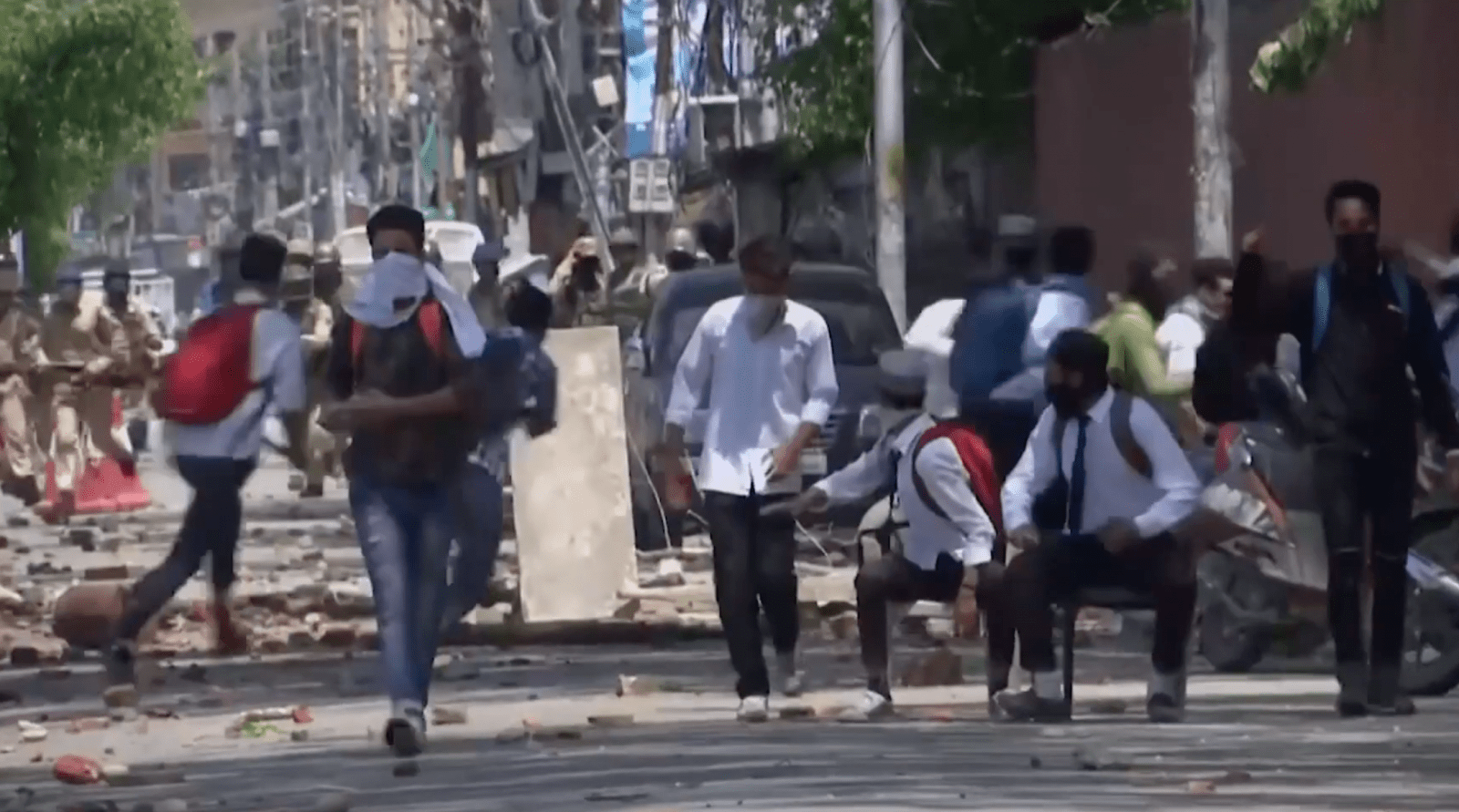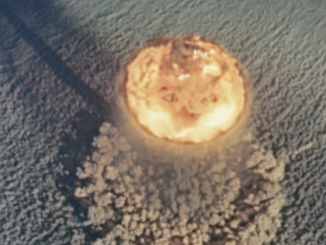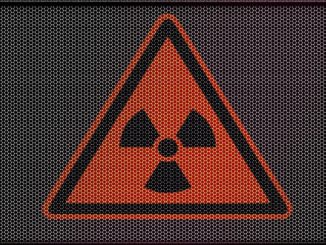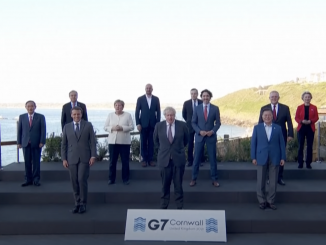 It doesn’t mark the end of an era, rather it is the beginning of a new era that will be prominent due to added resistance and alienation towards New Delhi in the occupied valley. Although, it was long due and the hardliner Hindu nationalist PJB had promised to introduce the watershed amendment in its election manifesto, the August 5th decision of the Modi government to abrogate Article 370 of the Indian constitution sent shockwaves across the world due to the deceptive haste & apparent lack of consultation before the decision.
It doesn’t mark the end of an era, rather it is the beginning of a new era that will be prominent due to added resistance and alienation towards New Delhi in the occupied valley. Although, it was long due and the hardliner Hindu nationalist PJB had promised to introduce the watershed amendment in its election manifesto, the August 5th decision of the Modi government to abrogate Article 370 of the Indian constitution sent shockwaves across the world due to the deceptive haste & apparent lack of consultation before the decision.
For the people of the erstwhile state of Jammu and Kashmir (J&K), it came as a tremor that instantly deprived them of all fundamental rights and privileges that they had enjoyed for more than 7 decades and were guaranteed by the government of India at the time of accession. In the words of former bureaucrat turned politician, Shah Faesal, this move converted the people of J&K from “citizens to subjects”. Betrayed and disenchanted, people of J&K are confined to their houses under strict curfew and a complete information blackout. However, once the restrictions are toned-down, how they react to this egregious move aimed at burglarizing their identity, land and history, will decide the future of the whole of South Asia.
Labelled as the unfinished agenda of subcontinent’s partition, Kashmir emerged as the major bone of contention between the infant dominions of India and Pakistan in 1947. Ruled by a Hindu Maharaja, more than 80% of the state’s population was Muslim with the bulk of them settled in the valley of Kashmir and erstwhile Jagir of Poonch. After the approval of India Independence Act 1947 that enshrined rules about the future of the princely states of British India, there ensued a rift between the pro-India and pro-Pakistan segments of the state’s population with the Maharaja favouring the former, which though few in numbers, enjoyed considerable influence over the Maharaja.
In June 1947, a “no-tax” drive started in the erstwhile Jagir of Poonch that soon transformed into a secessionist movement. This area was home to marshal Sudhan tribe and as per the claim of Alastair Lamb, there were at least 60,000 ex-servicemen of British Indian Army that had just returned to their homeland after participating in World War II. Given the marshal history of Sudhans & sensing a probable rebellion in the area, the Maharaja started to disarm the Muslims in the Poonch during the month of July. The orders were initially followed by Poonchis but once they saw their arms being handed over to Hindus and Sikhs, a rejoinder was inexorable. These events were exacerbated by the news of the heinous atrocities being committed against the Muslims of Jammu by the forces of the Maharaja in cahoots with organized gangs of Hindus and Sikhs.
14th August was celebrated as “Pakistan Day” in defiance of the Maharaja’s orders and in the next few weeks, armed clashes started between State Forces and Poonch’s Sudhan tribesmen that were now joined by other local clans. Due to the historical linkage between Poonch and areas of British India at the other side of Jhelum River, that were now Pakistan, fresh supplies of arms and ammunition were sought from that area with a young lawyer named Muhammad Ibrahim Khan taking the lead. Once the supply of arms was ensured, the Maharaja’s forces were soon overwhelmed and quickly retreated from various parts of Poonch and the adjacent Mirpur district. In mid-September, local fighters were joined by a few thousand tribesmen (not more than 3,000) from Pakistan’s North Western Frontier regions and the Maharaja’s security apparatus started collapsing with Muzaffarabad falling to rebel forces. At the beginning of the last week of October, rebels were just 30 kilometres away from Srinagar and the state’s summer capital was on the verge of collapse.
Realizing the gravity of the situation and under apprehensions that he may lose his whole state to rebels, the Mahajara sought help from the Indian government, which after initial reluctance, agreed to send its regular troops but only on the condition that a formal instrument of accession of the state with the Indian union must be signed. This instrument was signed on October 26th 1947 and the next day the Indian government started landing their troops at the Srinagar airfield, accruing to over 35,000 in the next few weeks. The involvement of the better armed Indian Army pushed back the rebel offensive. Once regular troops from Pakistan Army joined in, the first Kashmir war started that lasted for more than a year.
Even though the Maharaja acceded to India, he didn’t completely integrate his state with the dominion of India. The instrument of accession noticeably mentioned that the state of J&K will have a semi-autonomous status with New Delhi, only controlling matters related to defence, external affairs and communication. The rest of all the subjects were left to the state to legislate and deal. On the basis of this instrument of accession, article 370 was included in the Indian constitution that granted the state with a semi-autonomous status allowing all except the above mentioned three domains to be dealt with by the state government. The state was allowed to have its separate flag and its own legislature. In 1954, article 35-A was introduced in the Indian constitution that granted the state legislature to define the state subject i.e. who can be a resident of the state? Based upon a 1927 law, this article forbids anyone from outside the state to buy or own land or property in the state. For next four decades, article 370 maintained the semi-autonomous status of the state but the outbreak of armed insurgency in 1989 resulted in the heavy deployment of army troops authorized with acts such as the Armed Forces Special Powers Act (AFSPA) and the Public Safety Act (PSA). These draconian laws granted special powers to armed forces that curtailed the jurisdiction of the local government. Article 35A nevertheless proved to be a key for guaranteeing the control of state resources by the state’s subjects besides restraining the Indian government to change the demography of the region.
In 2019, right-wing BJP won a landslide victory in Indian general elections and PM Modi got a populist node for five more years. During his previous rule from 2014 to 2019, the Modi government made major changes to India’s Kashmir policy. First of all, this narrative was vigorously promoted that Kashmir under Indian control is its integral part and the only outstanding issue is related to the part of Kashmir under Pakistani control. This narrative shaping was supplemented by the closure of any talks over Kashmir and once the situation in the occupied valley deteriorated due to the martyrdom of a rebel commander, unchecked and brute force was used at unarmed protestors resulting in the deaths of hundreds of innocent civilians and injuring thousands. In addition, the Modi government systematically and fervently promoted its right-wing ideology instigating a wave of violent fanaticism and jingoism within Indian society. Numerous events of mob violence based on religious intolerance took place while the tag of traitor became more recurrent to be labelled. Essentially, while Modi and BJP were pushing the Indian society from secularism to fanaticism and during the election campaign, a visible trend towards fascism was witnessed.
After ingeniously cashing the Pulwama attack to his own electoral advantage Modi came to power in 2019 with a landslide majority. It is widely believed that the jingoistic card played by Modi did appeal to the Indian masses.
During the election campaign, BJP promised to abrogate the article 370 and included it in its election manifesto. The pledge was based on the ostensible and well-sold narrative that there cannot be two systems in one country and that article 370 is creating distances between Kashmir and the rest of the country and its annulment is a prerequisite for Kashmir’s real integration into the Indian union. In the backdrop, fascist Hindutva mindset was at work that intended to subsume Kashmir, the only Muslim majority state in the Indian Union, and alter its demographic tendencies in the favour of Hindus.
On August 5th, 2019, weeks after thousands of additional troops were deployed in the valley, three days after the Indian government recklessly ordered tourists and pilgrims to leave Kashmir and enforced holidays in schools, and one day after the incarceration of whole political leadership of Kashmir, BJP’s leader Amit Shah presented a Presidential ordinance in the upper house of the Indian parliament to annul Article 370 of the Indian constitution. Amid the uproar from opposition benches, the house adopted the resolution later to be passed by the lower house of parliament.
Because it was mentioned in BJP’s election manifesto, this watershed move was in the offing but it was expected that the government may try to take such a step with such drastic consequences after elections in the J&K, where BJP is estimated to secure an easy victory.
So, what provoked such a hasty pronouncement of abrogation?
Two important developments unfolding during the past few weeks may have acted as a catalyst for pugnacious Modi and his associates to take this decision in such a reckless fashion. First, during PM Imran Khan’s visit to the USA, Donald Trump offered to mediate the Kashmir conflict between India and Pakistan, a move that attracted severe renouncement from India, which couldn’t restrain the POTUS to once again extend his offer for mediation a few days later. India has heavily invested in diplomatic efforts to brand Kashmir as a bilateral issue and strongly opposes any third-party intervention. The US President uttering the name “Kashmir” twice with an offer of mediation means a setback to India’s long-held position. This apparent rebuff could have infuriated Delhi to imply to the US President and the administration that India doesn’t care much about what the leaders of global powers say and will essentially behave as a regional hegemon.
Secondly, India has been completely left out of Afghan peace talks while Pakistan has been a major facilitator to sponsor a deal between the Afghan Taliban and USA, which is in the offing. After investing more than $4 billion in Afghanistan, coupled with geopolitical reasons, it will be a major setback for India if Taliban, a group staunchly opposed by India, assumes a major role in Afghanistan’s political future. There were already apprehensions that India could play the role of a spoiler, and the reckless decision regarding Kashmir implies that India wants Kashmir to be the flashpoint of South Asian politics, thus diverting Pakistan’s and other global powers’ attention from the Afghan peace talks.
Because Kashmir is an internationally recognized disputed territory that is acknowledged by as many as half a dozen United Nations Security Council Resolutions (UNSC) with resolution 47 being the basic resolution calling for a plebiscite in the region, India couldn’t legally change the status of the state of J&K. This maintenance of the status quo was reaffirmed by India itself in its various bilateral accords with Pakistan, most notably in the Shimla accord of 1971. After assimilating the state of J&K with the Indian Union, the fascist regime of Modi has made it very clear that they don’t have any regard whatsoever for UNSC resolutions or for the bilateral accords that they have been insisting upon for so long.
Article 370 was a distinct clause in the Indian constitution and the way forward for its annulment was also appropriately enshrined in the Indian constitution, which necessitates the mandate of state of J&K’s constituent assembly, besides the central legislature’s approval. BJP government, however, adopted a different course. In the absence of the state’s constituent or even legislative assembly, they cited the consent of the governor as the state’s government’s approval. It is pertinent to mention here that governor is himself appointed by the central government and can’t be a representative of the people of J&K. This apparent lacuna can become a basis for the Indian Supreme Court to strike-down the amendment, but such a ruling will depend upon the Indian Supreme Court’s audacity to stand firm against the menacing attitude and fanaticism propagated by BJP.
The major sufferers of the repulsion of Article 370 are the people of J&K and as a paramount manifestation of India’s illegal occupation of the region, they were completely kept in the dark about this decision. Even the pro-India political leadership has been placed under house arrest and with the deployment of thousands (according to some sources more than 100,000) of additional troops in valley and Laddakh, the state of J&K is essentially under absolute siege in order to prevent the outbreak of any protest movement against India’s tyrannical and authoritarian actions. For the first time in decades, even the landline telephone connections have been blocked while the internet service remains inaccessible, virtually cutting off the state’s connections from the outside world. These despotic measures to crush any dissent manifest the true and despicable face of the so-called biggest democracy in the world.
Even though, due to imposed restrictions and information blackout, chances of any protests occurring and being reported are very slim, yet there is news of stone-pelting and protests in some of the parts of Srinagar and Baramula, the two hotbeds of anti-India sentiment in J&K. However, once the restrictions are moderated, the real magnitude of the reaction to this tyrannical move will become apparent.
In Laddakh and Jammu, which host majority Buddhist and Hindu populations, respectively, with Muslims forming the minority, chances of opposition and protests are very small. Laddakh, however, has been deprived of its legislative assembly, which can become a reason for resentment, but Jammu is expected to remain largely passive. However, it will be the valley of Kashmir with a population of over 7 million, featuring 97% Muslims, that will pose the major obstacle to the Indian action. This area remained a hotbed of militancy for decades and after 2008, stone-pelting protests became a new norm in the area. Burhan Wani’s martyrdom in 2016 once again raised up the valley to the boiling point, triggering a widespread wave of resentment and hatred for India that the central government failed to contain.
Deployment of additional troops in J&K, in spite of the region already being the most militarized zone in the world, makes obvious indications that the government of India has planned to crush any mention of dissent by using unchecked and brute force. As the history of Kashmir implies, the use of force has never been able to contain the sentiments of the people and after India has completely failed to win over the hearts and minds of the people in the valley, enforcing physical restrictions will just be temporary remedies.
Due to prevalent resentment in the valley of Kashmir, dozens of local youth joined the militancy in recent years, some of them university graduates and college students. In the wake of this disastrous step according to which India has literally tried to burglarize the rights of the people of J&K, the trend of youth joining militancy is expected to further intensify which will lead towards more incidents of violence and instability in Kashmir.
India has long practised a policy of blaming Pakistan for every untoward incident happening in Kashmir. This was recently evident during the Pulwama crisis, when a despaired youth caused severe losses to Indian security forces and as usual, India was quick to blame Pakistan. Pulwama crisis pushed the nuclear-armed neighbours on the verge of a nuclear exchange that was averted at the last moment. Moreover, once killing sprees and human rights violations gain momentum in Kashmir, it will be impossible for Pakistan to remain indifferent of the situation. This will deteriorate the already fraught relations between the two countries, ultimately leading to catastrophic consequences for the whole region.
Although Pakistan has rejected India’s unilateral move to alter the status quo in Kashmir and has launched a diplomatic campaign to expose India’s sinister designs, the country has few policy options to compel India to reverse its decision. Pakistan is already facing immense pressure from IMF and FATF to comply with their demands, while also facilitating the Afghan peace talks that are of profound significance to the current US administration and any diversion for Pakistan from the Afghan peace process can have shattering consequences for the USA. However, India is USA’s strategic partner and due to the long term utility of India, USA will never want to infuriate India by openly supporting Pakistan in the case for Kashmir.
In the wake of India’s decision, PM Imran Khan made phone calls to the Malaysian PM and the Turkish PM and as per media reports and obtained their support. Moreover, China also issued a statement sticking to its earlier stance of opposing any attempt to unilaterally change the status quo, thereby indirectly supporting Pakistan’s stance. However, these developments are just peanuts in the wake of a diplomatic crisis faced by Pakistan. Undoubtedly, this is the first major foreign policy challenge to an already beleaguered government of PM Imran Khan and victory here would require an offensive diplomatic campaign; a campaign that is even more offensive and pervasive than the previously launched drive to salvage the country from financial miseries.
Modi’s Hindutva drive has made an attempt to consume Kashmir but this will not be the end and the expansionist intentions of Hindu fascists will further intensify. In fact, this step is part of a larger scheme of first converting India into a Hindu nation and then fulfilling the dream of “Akhand Bharat”. While Pakistan is already short of options, now the people of Kashmir will have to fight this battle with reinvigorated zeal and unwavering resolve. For their identity, for their land and for their rights, they will have to resist this move at any cost. If people of J&K capitulated here, history books will quote “there was a Kashmir that once had a majority Muslim population”. Resistivity at this important moment of history can usher into an era of independence, the people of world’s biggest prison.
![]()




Be the first to comment